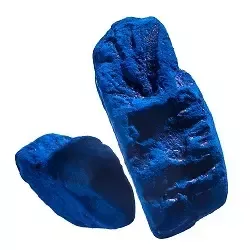Exploring the Rich History and Modern Applications of Indigo Natural Dye in Textiles
The Allure and Tradition of Indigo Natural Dye
Indigo natural dye, derived from the leaves of the indigo plant, has captivated cultures around the world for centuries. Its rich blue hue, which varies from deep navy to vibrant cerulean, has woven itself into the very fabric of artistic expression, textile production, and cultural identity. This article explores the history, process, and significance of indigo in various societies.
The Allure and Tradition of Indigo Natural Dye
The traditional process of creating indigo dye is an art form in itself. The leaves of the indigo plant are harvested and then fermented in a vat of water. This fermentation process converts the indican present in the leaves into indigo dye. The transformation yields a striking blue pigment, which can be further processed and extracted. One of the most mesmerizing aspects of indigo dyeing is that it changes color upon exposure to oxygen. When fabric is dipped into the vat, it emerges a greenish-yellow, gradually transforming into blue as it oxidizes in the air. This magical color change has inspired generations of artisans and dyers.
indigo natural dye

Culturally, indigo has permeated the social fabric of many societies. In Japan, the practice of aizome, or indigo dyeing, has become a treasured traditional craft. The Japanese have perfected various techniques, such as shibori (resist dyeing) and katazome (stencil dyeing), combining indigo with intricate designs. These techniques not only showcase the beautiful blue shades but also embody a deep connection to nature and the changing seasons. Similarly, in West Africa, indigo holds cultural significance, often associated with spiritual rituals and used in traditional textiles like the vibrant batik cloths.
The revival of indigo dyeing has gained momentum in recent years as consumers seek sustainable and natural alternatives in fashion and textiles. With heightened awareness of environmental issues, artisans around the globe are embracing indigo’s natural properties instead of synthetic dyes that harm the environment. This return to traditional methods not only supports artisans but also promotes a deeper appreciation for the heritage and craftsmanship behind textile production.
Moreover, the aesthetic appeal of indigo continues to attract fashion designers and artists, who incorporate the dye into innovative creations. Present-day collaborations between traditional artisans and contemporary designers are merging age-old techniques with modern styles, resulting in unique blends that honor the past while looking toward the future.
In conclusion, indigo natural dye is more than just a color; it is a story woven into the fabric of human civilization. Its journey from ancient cultivation to modern fashion reflects both artistic brilliance and a deep-rooted cultural history. As society moves towards eco-consciousness, the revival and appreciation of indigo serve as a reminder of the beauty found in tradition and the need to respect our planet and its resources. Embracing indigo is not only a tribute to the artisans who perfected its craft but also a step towards a more sustainable future in the textile industry.
-
The Timeless Art of Denim Indigo Dye
NewsJul.01,2025
-
The Rise of Sulfur Dyed Denim
NewsJul.01,2025
-
The Rich Revival of the Best Indigo Dye
NewsJul.01,2025
-
The Enduring Strength of Sulphur Black
NewsJul.01,2025
-
The Ancient Art of Chinese Indigo Dye
NewsJul.01,2025
-
Industry Power of Indigo
NewsJul.01,2025
-
Black Sulfur is Leading the Next Wave
NewsJul.01,2025

Sulphur Black
1.Name: sulphur black; Sulfur Black; Sulphur Black 1;
2.Structure formula:
3.Molecule formula: C6H4N2O5
4.CAS No.: 1326-82-5
5.HS code: 32041911
6.Product specification:Appearance:black phosphorus flakes; black liquid

Bromo Indigo; Vat Bromo-Indigo; C.I.Vat Blue 5
1.Name: Bromo indigo; Vat bromo-indigo; C.I.Vat blue 5;
2.Structure formula:
3.Molecule formula: C16H6Br4N2O2
4.CAS No.: 2475-31-2
5.HS code: 3204151000 6.Major usage and instruction: Be mainly used to dye cotton fabrics.

Indigo Blue Vat Blue
1.Name: indigo blue,vat blue 1,
2.Structure formula:
3.Molecule formula: C16H10N2O2
4.. CAS No.: 482-89-3
5.Molecule weight: 262.62
6.HS code: 3204151000
7.Major usage and instruction: Be mainly used to dye cotton fabrics.

